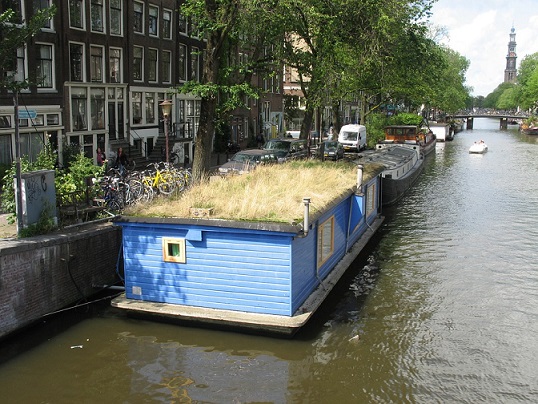 Is the amphibious house the home of the future? What on earth is an amphibious house, I hear you ask, and with good reason, because this is something altogether unique and innovative.
Is the amphibious house the home of the future? What on earth is an amphibious house, I hear you ask, and with good reason, because this is something altogether unique and innovative.
The current climate change we are facing dictates that water will rise in the next few decades, and weather conditions which are already changing will change even more, with massive floods in some regions and devastating droughts in others.
This has led individuals to look at methods of dealing with these extremes in unique ways – that is, of course, if we cannot as a race do something better like change our ways to stop global warming and climate change from actually happening.
Architects, ever the visionaries, have been getting to grips with living with water¦ just in case. One such architectural firm, Baca Architects, has designed the world’s first amphibious house, a family home on an island in the middle of the River Thames. The idea behind the design of the home is that it can rise like a ship and float on floodwater.
According to Baca co-founder, Richard Coutts, should there be a flood, the whole house will rise gently like a boat, floating on the water and keeping the habitable spaces safe above the flood level.
Baca has been doing research on waterways for some time, in conjunction with the UK’s Department for Environment, Food & Rural Affairs called The Long-term Initiatives for Flood-risk Environments (LifE) Project. The LifE Project acknowledges that man cannot beat nature and that it is better to actually make space for water.
A fully-floating structure was vetoed by the government’s Environment Agency, and raising the house on stilts would have meant that the ground floor would have been almost two metres off the ground, which would not have fitted in with the other houses in the neighbourhood.
The amphibious house is basically a lightweight timber-framed structure that is built into an excavated “wet dock” constructed from steel sheet piling with a mesh base that will allow water to enter and escape naturally. The house has a foundation of waterproofed concrete that wraps around the lower ground floor, acting like the hull of a ship. Four posts act as vertical guideposts to allow the house to slide up and down when it needs to move, according to changing water levels.
A terraced garden on the riverside will act as an “early warning system” for rising waters – once the first two terraces fill with water the house will start to rise. The house can currently rise up to two and a half metres, and the guideposts can be extended if necessary.
Well, it seems that we are not quite ready to suffer the same fate as Atlantis, so let’s hope that we can solve our water crises to the benefit of all, as amphibious houses sound great, but not everyone could afford one.
Get office water coolers and home water coolers in London for your home or office. Rent water dispensers and purchase water dispensers online from Living-Water.





